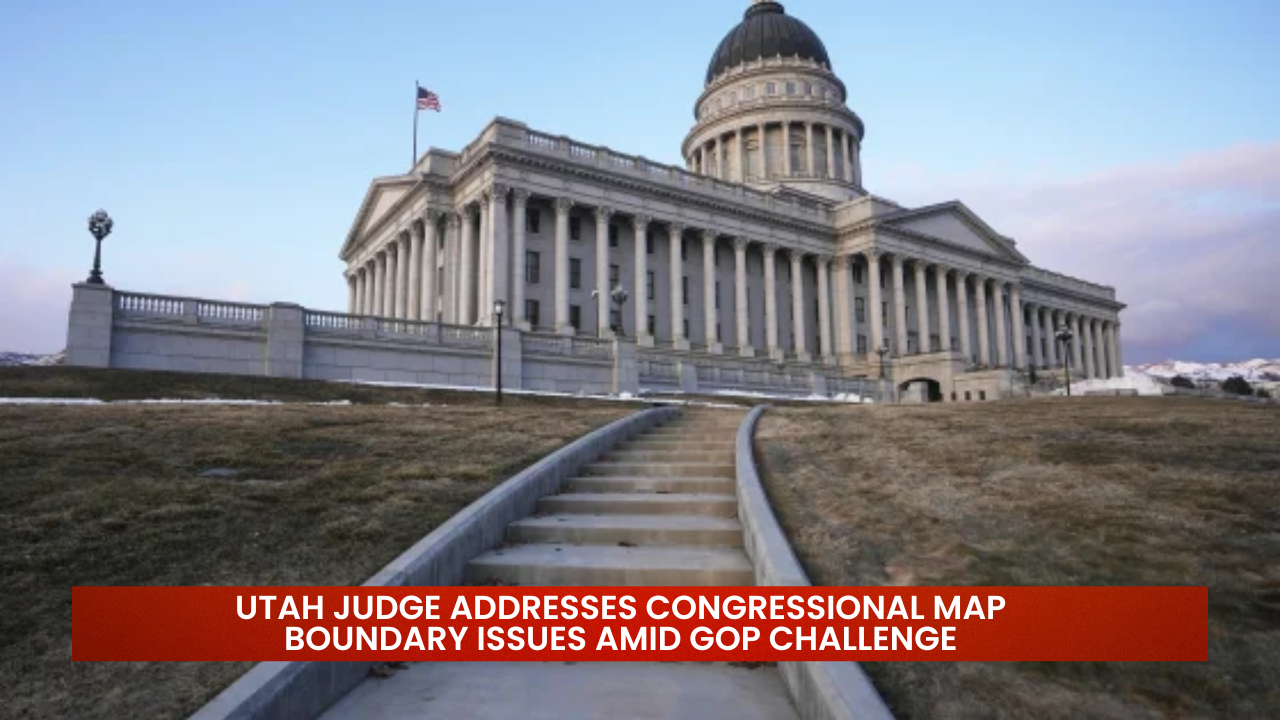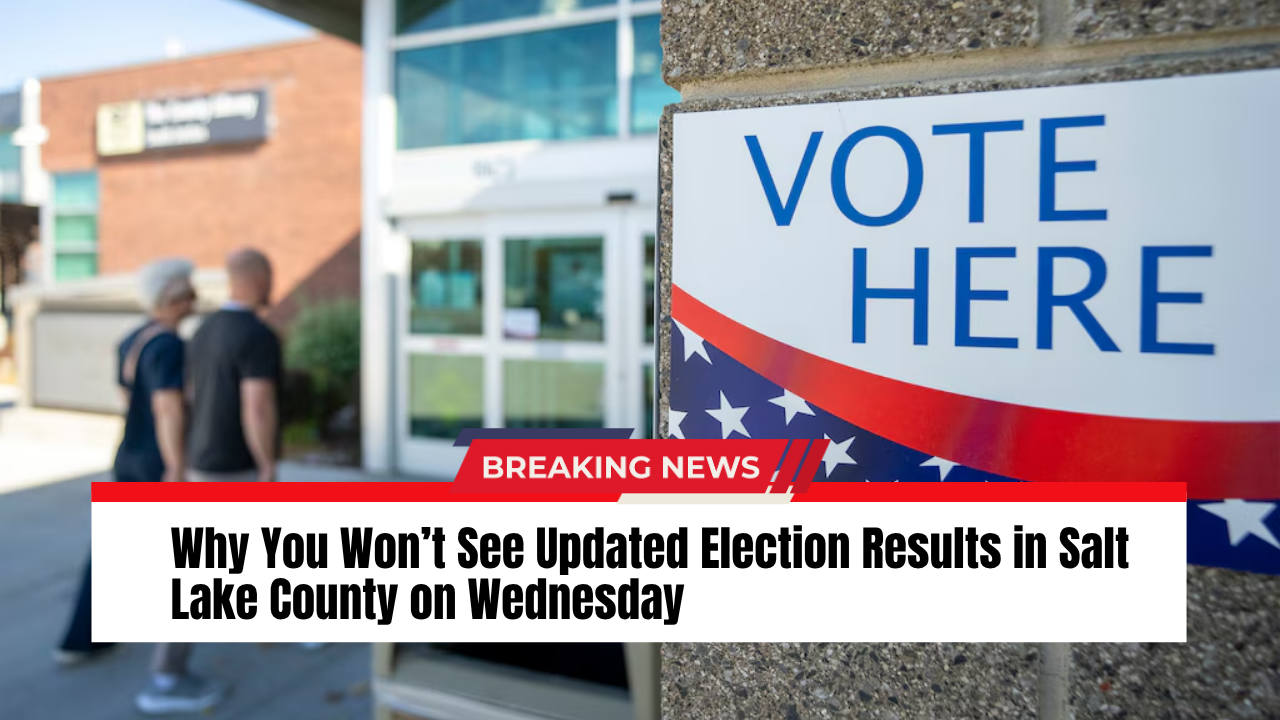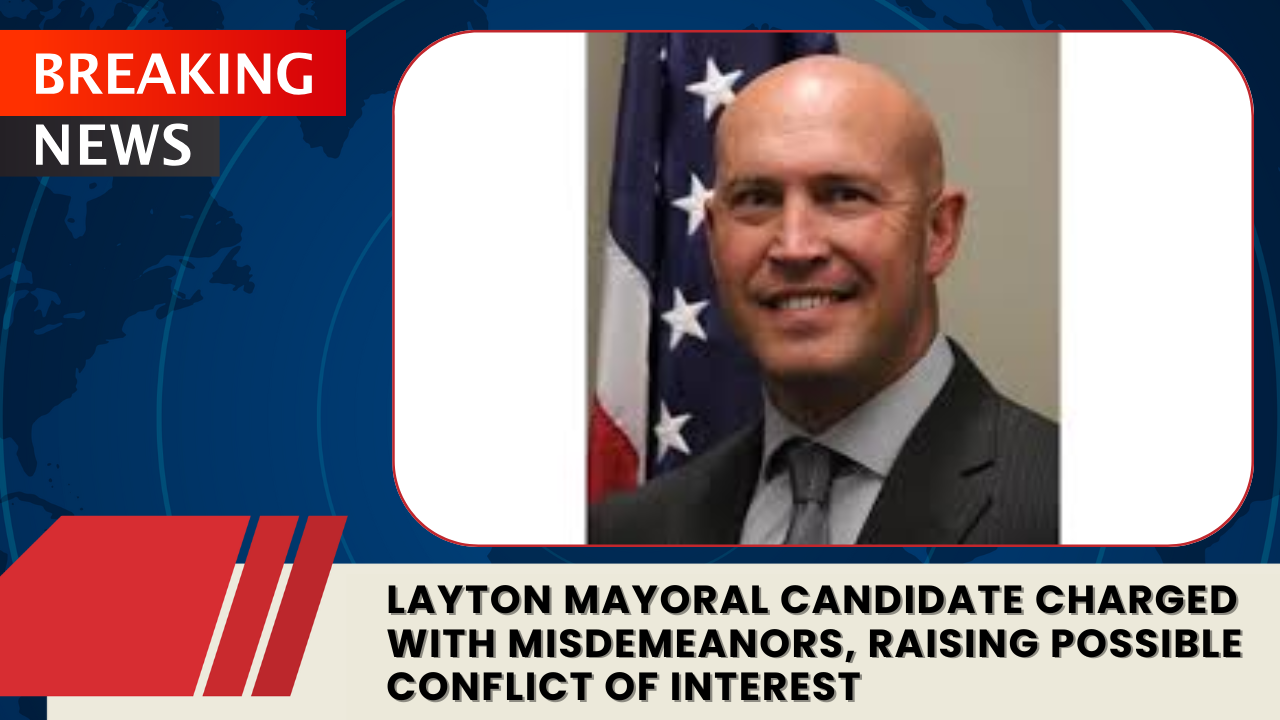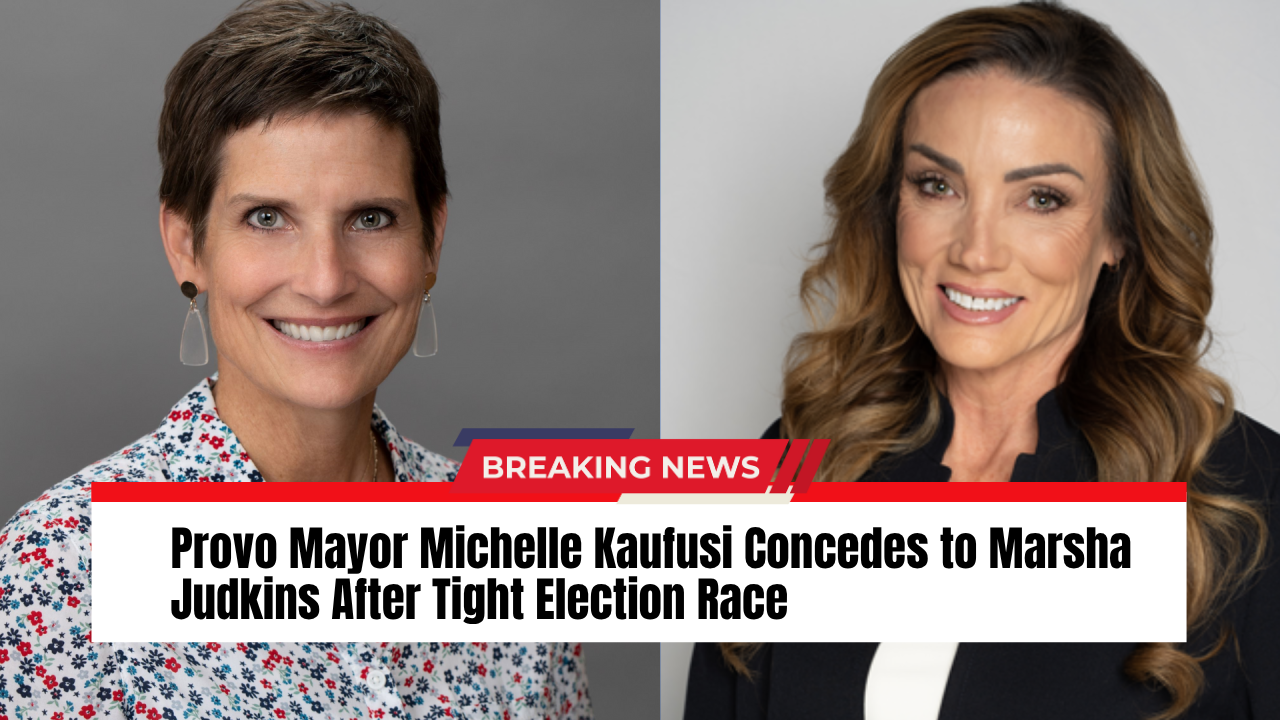Technical problems with Utah’s court-ordered congressional districts for 2026 have prompted judicial clarification, while Republican lawmakers continue pushing to overturn the entire redistricting plan.
Third District Judge Dianna Gibson issued a ruling Friday resolving confusion about several boundary discrepancies in the new congressional map, though she has not yet addressed broader constitutional challenges raised by legislative attorneys seeking to discard the districts entirely.
Boundary Confusion Creates Voting Questions
Election officials in Lieutenant Governor Deidre Henderson’s office discovered multiple boundary irregularities when comparing the court-selected congressional districts against current municipal boundaries. These technical issues raised questions about where certain residents should cast their ballots in next year’s elections.
In Sandy, the boundary line separating the 1st and 4th Congressional Districts cuts directly through a residential property located at the mouth of Little Cottonwood Canyon. Summit County presents another anomaly, with three homes situated between the district boundary and county line, despite conventions calling for district borders to follow county boundaries.
Additional complications emerged in Sandy, where the 4th District boundary excludes a single home that has been annexed into the city. This situation potentially creates an unusual one-home voting precinct unless addressed through boundary adjustments.
The irregularities stem from the litigation parties’ agreement to construct new congressional maps using census block data as it existed in 2020. However, residential development has continued since that census, and municipal boundaries have shifted as cities have annexed additional territory.
According to U.S. Census Bureau guidelines, census blocks serve as the smallest geographic unit used in redistricting, but they become outdated as communities grow and change between decennial counts.
Judge’s Technical Solutions
Gibson’s Friday ruling addressed eight specific boundary issues identified by state election officials. Most problems can be resolved without moving district boundaries, according to the judge’s determination.
Homes affected by boundary questions have been assigned to specific census blocks and will vote in the precincts designated for those blocks. This approach maintains the overall district structure while providing clear guidance for election administration.
The isolated Sandy home presents a unique situation requiring a boundary modification. Because the property was annexed into Sandy after the 2020 census, Gibson ordered the district boundary adjusted to incorporate the home into the 4th Congressional District, eliminating the potential for a single-home precinct.
These technical corrections allow election officials to proceed with preparations for the 2026 congressional elections while the larger legal battle continues over the validity of the court-ordered map.
Legislature Mounts Constitutional Challenge
Beyond the technical boundary questions, attorneys representing the Utah Legislature have filed arguments contending that Gibson’s entire map selection process violated constitutional principles and should be invalidated.
Legislative lawyers argue that the judge overstepped judicial authority by selecting congressional boundaries, a responsibility they claim belongs exclusively to the Legislature. Their court filing seeks to have Gibson reject the new map and reinstate the districts lawmakers drew in 2021.
Those 2021 boundaries produced four Republican-held congressional seats and triggered the litigation that led to Gibson’s current involvement. Legislative attorneys want those districts used for the 2026 elections while lawmakers appeal the judge’s decisions through higher courts.
The Legislature’s filing contends that boundary problems demonstrate no valid reason existed for accepting the plaintiffs’ proposed map over the legislatively enacted redistricting plan. Attorneys characterized the issues as evidence of a flawed process warranting reversal.
Gibson indicated she would address these broader constitutional arguments separately from her technical boundary clarifications, leaving that significant question unresolved for now.
Plaintiffs Defend Court Process
Legal representatives for the League of Women Voters, Mormon Women for Ethical Government, and individual voter plaintiffs have pushed back against the Legislature’s constitutional challenge.
Plaintiff attorneys argue that lawmakers deliberately delayed raising objections, waiting ten days before attempting to use minor technical questions to undermine the entire redistricting process after losing on substantive legal grounds.
According to the plaintiffs’ court filings, the Legislature received ample opportunity to draw compliant congressional maps. They characterize the task as straightforward, asserting that lawmakers’ failure to produce acceptable districts stemmed from unwillingness rather than inability.
With Lt. Gov. Henderson requiring finalized district boundaries by November 10 to conduct 2026 elections properly, Gibson selected from maps submitted by plaintiffs after determining legislative proposals failed to meet legal standards.
The Lieutenant Governor’s office oversees election administration statewide, including managing congressional district assignments and precinct organization for federal races.
Origins in Better Boundaries Initiative
The current redistricting controversy traces back nearly four years to disputes over Proposition 4, the Better Boundaries initiative approved by Utah voters in 2018. That measure aimed to establish an independent redistricting commission and prohibit partisan gerrymandering in drawing electoral districts.
State legislators largely repealed the citizen-passed initiative in 2021, subsequently adopting congressional boundaries that divided Salt Lake County into four separate districts. This configuration created four safe Republican congressional seats despite Salt Lake County’s more Democratic-leaning voter base.
Plaintiffs filed suit arguing that repealing Proposition 4 violated citizens’ constitutional right to enact laws through the initiative process. The Utah Supreme Court agreed with this argument last year, reinstating the Better Boundaries provisions.
Following the Supreme Court decision, Gibson ruled in August that the 2021 legislative map failed to comply with reinstated Proposition 4 requirements. She directed lawmakers to develop new districts meeting the initiative’s standards against partisan gerrymandering.
Republican legislators submitted a revised map to the court, but Gibson determined it too fell short of Proposition 4 requirements. She then selected one of two maps submitted by plaintiffs in the litigation.
Political Implications and Reactions
The court-ordered map creates a concentrated Democratic-leaning district in northern Salt Lake County. Analysis indicates this configuration favors Democratic candidates by approximately 17 percentage points, representing the first competitive Democratic district Utah has seen in decades.
Republican lawmakers have responded with strong opposition to Gibson’s decisions. Party leaders have announced plans to appeal the rulings and some legislators have discussed impeachment proceedings against the judge.
House Speaker Mike Schultz acknowledged in a television interview this week that time constraints may prevent an appeal from affecting the 2026 elections. He noted that critical deadlines have passed, complicating efforts to overturn the court-ordered districts before next year’s voting.
Despite these timeline challenges, Schultz indicated Republican legislators continue exploring all available legal options to challenge Gibson’s redistricting decisions.
Threats Prompt Court Security Response
The intensity of political reactions has generated serious concerns about judicial safety. The Administrative Office of the Courts issued an unusual public statement this week confirming that threats have been directed at Gibson.
Court administrators called for civility in political discourse, emphasizing that disagreements over judicial decisions never justify threatening behavior. Senate Republican leaders echoed this message, stating that while they strongly oppose Gibson’s rulings, threats and intimidation remain unacceptable regardless of how serious disagreements become.
Utah law classifies threatening a judge as a third-degree felony, carrying potential criminal penalties for those making such threats. The court system’s public acknowledgment of threats against Gibson reflects the seriousness with which officials view the situation.
Path Forward Remains Uncertain
Gibson must still rule on the Legislature’s broader constitutional arguments seeking to invalidate her map selection entirely. That decision will determine whether the technical boundary corrections she issued Friday become relevant for 2026 elections.
If Gibson rejects the constitutional challenge, election officials will proceed with the court-ordered districts as modified by Friday’s clarifications. Should she accept legislative arguments, the situation returns to the 2021 boundaries while appeals move through Utah’s court system.
The timeline for resolving these questions grows increasingly tight as election preparation deadlines approach. Candidates need to know district boundaries to plan campaigns, and voters require clear information about which congressional race they will participate in next year.



